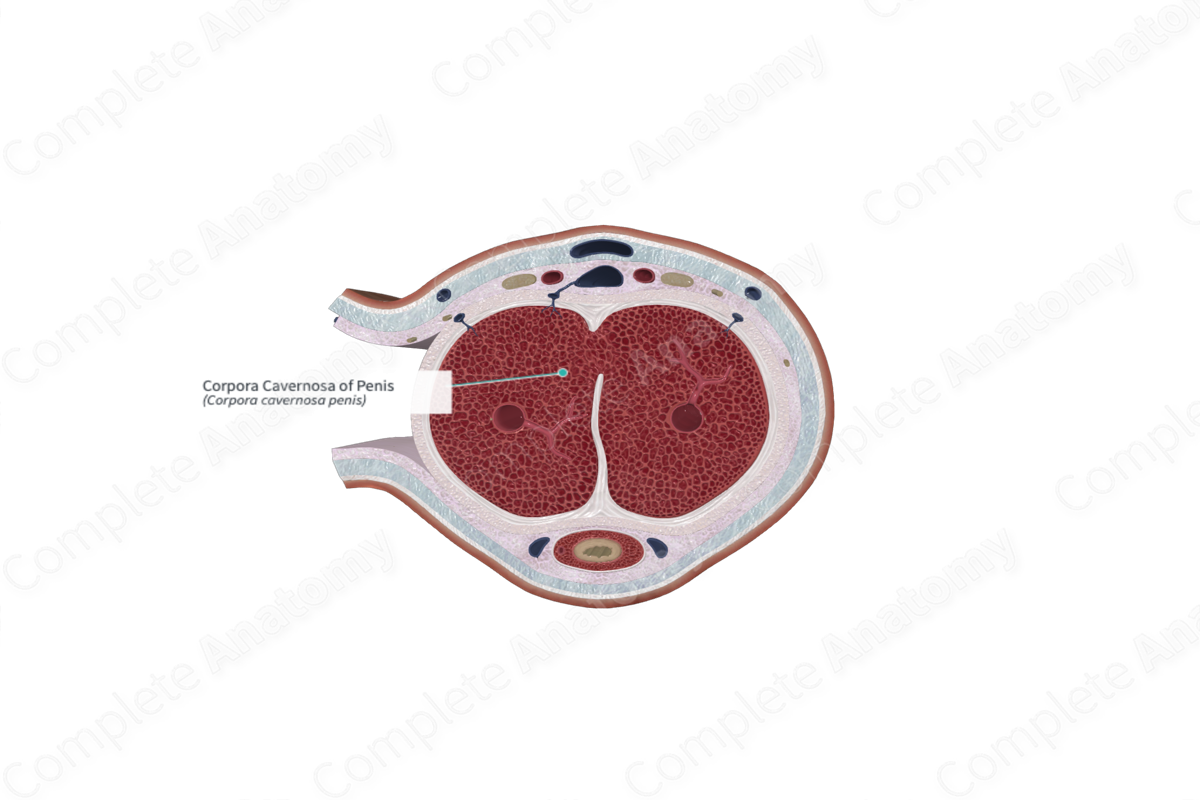
Quick Facts
The corpus cavernosum penis is one of two columns of erectile tissue forming the dorsum and sides of the penis (Dorland, 2011).
Structure and/or Key Feature(s)
The penis is mainly composed of two corpora cavernosa that extend from the root of the penis to the glans. Within this erectile tissue, there are dilatable cavernous spaces lined with epithelium. These spaces, the cavernous sinuses, fill with blood and become distended during erection. The cavernous sinuses are separated by trabeculae of connective tissue and contain bands of smooth muscle. The smooth muscle relaxes upon parasympathetic stimulation allowing blood to fill the sinuses. The sinuses receive blood from the deep arteries.
Anatomical Relations
The corpora cavernosa are located along the dorsal side of the penis. The major neurovascular bundle of the penis is located dorsally on the corpus cavernosa.
The corpora cavernosa are separated by a septal extension of the tunica albuginea. However the septum is incomplete and a communication remains between the corpora cavernosa (Quartey, 2006).
Function
The corpora cavernosa help maintain erections by preventing blood return from the penis through the deep dorsal vein of the penis.
List of Clinical Correlates
—Erectile dysfunction
References
Dorland, W. (2011) Dorland's Illustrated Medical Dictionary. 32nd edn. Philadelphia, USA: Elsevier Saunders.
Quartey, J. K. M. (2006) 'Anatomy and Blood Supply of the Urethra and Penis', in Schreiter, F. and Jordan, G.H. (eds.) Urethral Reconstructive Surgery. Berlin, Heidelberg: Springer Berlin Heidelberg, pp. 11-17.
